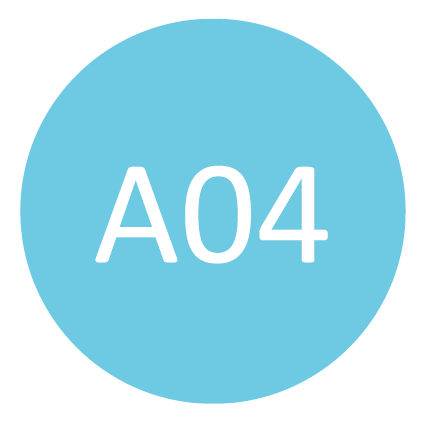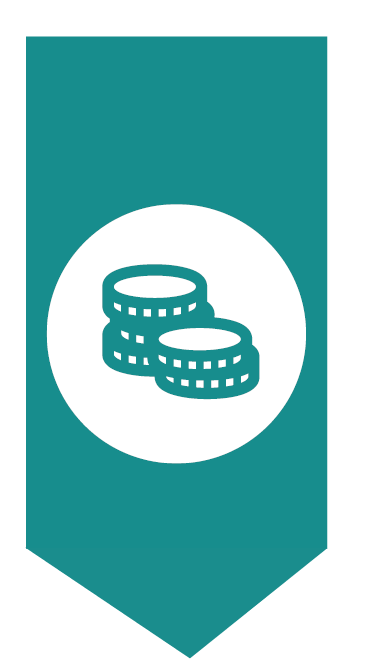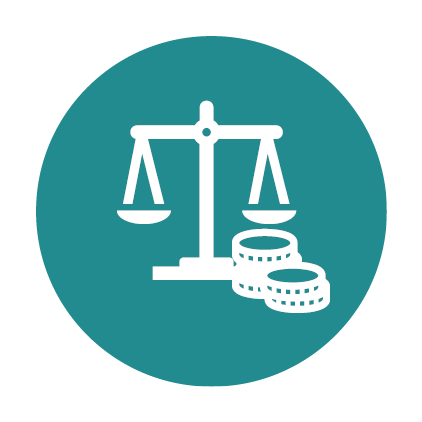Sustainability

For a sustainable future
New reporting obligations, taxes, legal requirements – there are many measures designed to pave the way towards a sustainable society and economy. The researchers in the TRR 266 are investigating how effective these instruments really are – and they are developing metrics and models that help different stakeholders to set the right course for a sustainable future.

Better information, more sustainability?
What do we need to do to make the economy and society more sustainable? Do we need environmental taxes? Do we need bans? Or is it also possible to encourage companies and consumers to behave more sustainably by providing more information? And how should this information be presented? The researchers of the TRR 266 focus on these questions and provide important insights for policymakers and regulators.
Will banks grant more loans to sustainable companies when they have to disclose their climate risk?
Floods, droughts, heat waves – climate change threatens to permanently alter the world we live in. It is also having an impact on the global economy: financial losses and insolvencies are a particular threat to companies with a high climate risk. In other words, to companies that are severely affected by the physical effects of climate change. When banks grant loans to these companies, they aggregate their climate risk exposure. This is very dangerous. Not only for banks and investors, but also for financial stability and thus for the economy and society as a whole. It is therefore important to understand the resilience of financial institutions to climate risks.
Project A09 „Disclosure Tasks“ therefore investigates, among other things, how banks report on their climate risks, what factors determine this largely voluntary decision and how external stakeholders react to these disclosures. The researchers also examine whether these disclosures contribute meaningfully to the transparency of banks’ climate risk exposures. And what happens when banks are obliged to be more transparent about their climate risks? Will they become more sustainable? Will they, for example, grant more loans to sustainable companies?

Jannis Bischof explains what the project A09 is all about.

Can carbon footprint labels encourage sustainable food choices?
On the path towards an ecologically sustainable economy and society, we consumers play a central role. Better information has, for example, the potential to encourage us to consume more sustainably and thus positively impacts the economy, the environment and society. But does information about the CO2 footprint of food entice us to eat more sustainably? The answer is yes! In a field experiment researchers of the project B04 „Real effects of Transparency“ found that this is the case. What matters is how the information is presented. The effect was greatest when CO2 data were visualized in traffic light colors or presented as environmental costs. Click here for the results & background information.

The experiment in a nutshell

Sustainability Reporting Navigator: more transparency for companies and stakeholders
Sustainability reporting is considered an important tool on the way to a sustainable economy. It is designed to make sustainability-related risks and opportunities for companies’ business transparent, as well as their impact on the environment. However, many companies find it difficult to keep up with the seemingly never-ending flood of new reporting frameworks and regulations – and to figure out which ones they need to comply with. For sustainability reporting to achieve its goals, companies need transparency about reporting requirements. Stakeholders of companies, in turn, need transparency about the sustainability performance of companies.
This is why the project A07 “Ambiguity, Learning, and the Diffusion of Reporting Practices” developed the Sustainability Reporting Navigator (SRN). The open science platform 1) shows what companies need to report. 2) It illustrates how stakeholders think about sustainability issues and what information they consider important. 3) And it makes transparent which sustainability topics companies are currently reporting on and how they are performing.

The Sustainability Reporting Navigator
in a nutshell
Green bond segments: more transparency, less greenwashing?
Green bonds are seen as an important instrument for financing environmentally friendly projects – and driving the transition to a sustainable global economy. Conceptually, green bonds can be defined as bonds whose proceeds are committed to finance environmental and climate-friendly projects. However, a binding standard and a unified definition are still lacking. This makes it challenging for investors to spot greenwashing – and to identify those companies that are truly committed to green investing.
The new green bond segments introduced on some European exchanges are designed to create more transparency in this respect. For example, bonds that meet the green bond principles of the International Capital Markets Association are bundled in the green bond segment of the Frankfurt Stock Exchange. But does the introduction of “green segments” effectively increase transparency for investors? And are green bonds that are placed on the green segment actually traded more frequently than those that are not listed there? Project B05 “Transparency and Financial Markets” is investigating these and other questions.

New metrics for a sustainable future
On the way to a more sustainable future, reliable numbers are key to providing orientation and helping stakeholders make decisions. However, there is often a lack of metrics and models to determine, for example, how much a company’s behavior harms the environment, to what extent a company is affected by climate change or when it is worthwhile to invest in renewable energy. The researchers in the TRR 266 are developing metrics and models that provide reliable information and predictions.

Facilitating and promoting sustainable investment decisions
For a successful transition to a sustainable economy, it is crucial that sustainability pays off – and that this is transparent to companies and investors. Project A04 “Accounting for Investments in Operating Assets” has therefore developed a metric called Levelized Profit Margins. This metric makes transparent how profitable renewable energy is compared to fossil fuels over its entire life cycle. It helps companies and other stakeholders to decide when and under what circumstances it is worth investing in renewable energies and clean technologies. And it reveals what adjustments still need to be made to make renewables and clean technologies cost-competitive. Take power-to-gas technologies, for example: read about the key findings in the publication and in this article.

Gunther Glenk explains what the project A04 is all about.

Making climate risk measurable
How does climate change affect companies and the global economy? How can the net-zero transition be achieved? And how can green technologies and patents be promoted? A new method developed by project B10 “Corporate Transparency and Unstructured Soft Information” helps to answer these and further questions. It identifies the attention that earnings call participants pay to companies’ climate change exposure and allows predictions about how climate change affects jobs, innovation, and risk-sharing in capital markets. The approach helps investors, regulators and policymakers to quantify companies’ climate change exposure and set them on the right course by allowing them to make important predictions. Find out more in the publications “Firm-level climate change exposure” and “Pricing climate change exposure” as well as in the blog post “How does climate change affect jobs, innovation, and risk-sharing in capital markets?“.

Can taxes help to shape a more sustainable future?
How can people and companies be motivated to act more sustainably? An important question that many social and political actors are currently addressing. Environmental taxes are seen as an important tool to achieve this goal. They are designed to make undesirable behavior less attractive. But do taxes always have the desired effect? How do taxes affect the real economy? And what about unwanted side effects?

How efficient and effective are environmental taxes?
Taxes, their effects and interactions are complex – thus it is not immediately obvious how newly introduced taxes work. Project B01 “Investment Effects of Multidimensional Taxation” therefore analyzes the intended and unintended effects of new tax policy instruments. Among other things, the researchers examine how environmental taxes interact with other tax regulations and how these taxes affect the real economy through employment, productivity and investments.
A recent study focuses on a German policy reform introduced in 2019, which provides preferential tax treatment for hybrid company cars. It was designed to help reduce the high CO2 emissions in the transportation sector. The study shows that the reform has indeed contributed to a significant increase in hybrid vehicle registrations among companies – and thus promoted green driving. However, it also shows that the reform is not very cost-efficient: The costs per saved ton of CO2 emissions are relatively high for the taxpayer. Each ton of CO2 saved by the new regulation costs the taxpayer up to 680 euros. For comparison, this is more than eight times higher than the price for CO2 certificates in European emissions trading. The research team therefore recommends adjustments to the reform to improve cost efficiency. For more information read the study and the F.A.Z. article.





